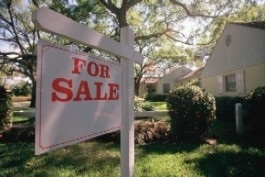Existing-Home Sales Rise in March 2011
Sales of existing-home sales rose in March 2011, continuing an uneven recovery that began after sales bottomed last July, according to the National Association of REALTORS®. Existing-home sales, which are completed transactions that include single-family, townhomes, condominiums and co-ops, increased 3.7% to a seasonally adjusted annual rate of 5.10 million in March from an upwardly revised 4.92 million in February, but are 6.3% below the 5.44 million pace in March 2010. Sales were at elevated levels from March through June of 2010 in response to the home buyer tax credit.Lawrence Yun, NAR chief economist, expects the improving sales pattern to continue. “Existing-home sales have risen in six of the past eight months, so we’re clearly on a recovery path,” he said. “With rising jobs and excellent affordability conditions, we project moderate improvements into 2012, but not every month will show a gain—primarily because some buyers are finding it too difficult to obtain a mortgage. For those fortunate enough to qualify for financing, monthly mortgage payments as a percent of income have been at record lows.”
NAR’s housing affordability index shows the typical monthly mortgage principal and interest payment for the purchase of a median-priced existing home is only 13% of gross household income, the lowest since records began in 1970.
According to Freddie Mac, the national average commitment rate for a 30-year, conventional, fixed-rate mortgage was 4.84% in March, down from 4.95% in February; the rate was 4.97% in March 2010.
Data from Freddie Mac and Fannie Mae show requirements to obtain conventional mortgages have been tightened, with the average credit score rising to about 760 in the current market from nearly 720 in 2007; for FHA loans the average credit score is around 700, up from just over 630 in 2007.
“Although home sales are coming back without a federal stimulus, sales would be notably stronger if mortgage lending would return to the normal, safe standards that were in place a decade ago—before the loose lending practices that created the unprecedented boom and bust cycle,” Yun explained.
“Given that FHA and VA government-backed loan programs turned a modest profit over to the U.S. Treasury last year, and have never required a taxpayer bailout, we believe low-downpayment loans should continue to be available for those consumers who have demonstrated financial responsibility and are willing to stay well within their budget. Raising the downpayment requirement would unnecessarily deny credit to many worthy middle-class families and veterans,” Yun said.
A parallel NAR practitioner survey shows first-time buyers purchased 33% of homes in March, compared with 34% of homes in February; they were 44% in March 2010.
All-cash sales were at a record market share of 35% in March, up from 33% in February; they were 27% in March 2010. Investors accounted for 22% of sales activity in March, up from 19% in February; they were 19% in March 2010. The balance of sales were to repeat buyers.
The national median existing-home price for all housing types was $159,600 in March, down 5.9% from March 2010. Distressed homes—typically sold at discounts in the vicinity of 20%—accounted for a 40% marketshare in March, up from 39% in February and 35% in March 2010.
NAR President Ron Phipps, broker-president of Phipps Realty in Warwick, R.I., said some renters are looking to homeownership as a hedge against inflation. “The typical buyer today plans to stay in a home for 10 years, while rents are projected to rise at faster rates over the next few years,” he said. “As buyers gain more financial security, the advantages of homeownership become more obvious. Rents will continue to trend up, especially in comparison with a fixed-rate loan which provides financial stability and gradual accumulation of equity over time.”
Total housing inventory at the end of March rose 1.5% to 3.55 million existing homes available for sale, which represents an 8.4-month supply at the current sales pace, compared with a 8.5-month supply in February.
Single-family home sales rose 4.0% to a seasonally adjusted annual rate of 4.45 million in March from 4.28 million in February, but are 6.5% below the 4.76 million level in March 2010. The median existing single-family home price was $160,500 in March, down 5.3% from a year ago.
Existing condominium and co-op sales increased 1.6% to a seasonally adjusted annual rate of 650,000 in March from 640,000 in February, but are 4.1% below the 678,000-unit pace one year ago. The median existing condo price was $153,100 in March, which is 10.1% below March 2010.
Regionally, existing-home sales in the Northeast rose 3.9% to an annual level of 800,000 in March, but are 12.1% below March 2010. The median price in the Northeast was $232,900, down 3.0% from a year ago.
Existing-home sales in the Midwest increased 1.0% in March to a pace of 1.06 million, but are 13.1% lower than a year ago. The median price in the Midwest was $126,100, which is 7.1% below March 2010.
In the South, existing-home sales rose 8.2% to an annual level of 1.99 million in March, but are 1.0% below March 2010. The median price in the South was $138,200, down 6.6% from a year ago.
Existing-home sales in the West slipped 0.8% to an annual pace of 1.25 million in March and are 3.1% below a year ago. The median price in the West was $192,100, which is 11.2% lower than March 2010.
~RISMedia April 21, 2011
What is your home's value? If your home is in the region of Southeast Texas, Lauri Kent is happy to provide you with an evaluation of your home's value. IF you are in the market to buy or sell a home in Greater Houston, Spring, The Woodlands, Conroe or any of the towns and communities around Lake Conroe, let Lauri Kent earn your business. She welcomes your interview. Contact Lauri Kent at 936.447.6000.


No comments:
Post a Comment